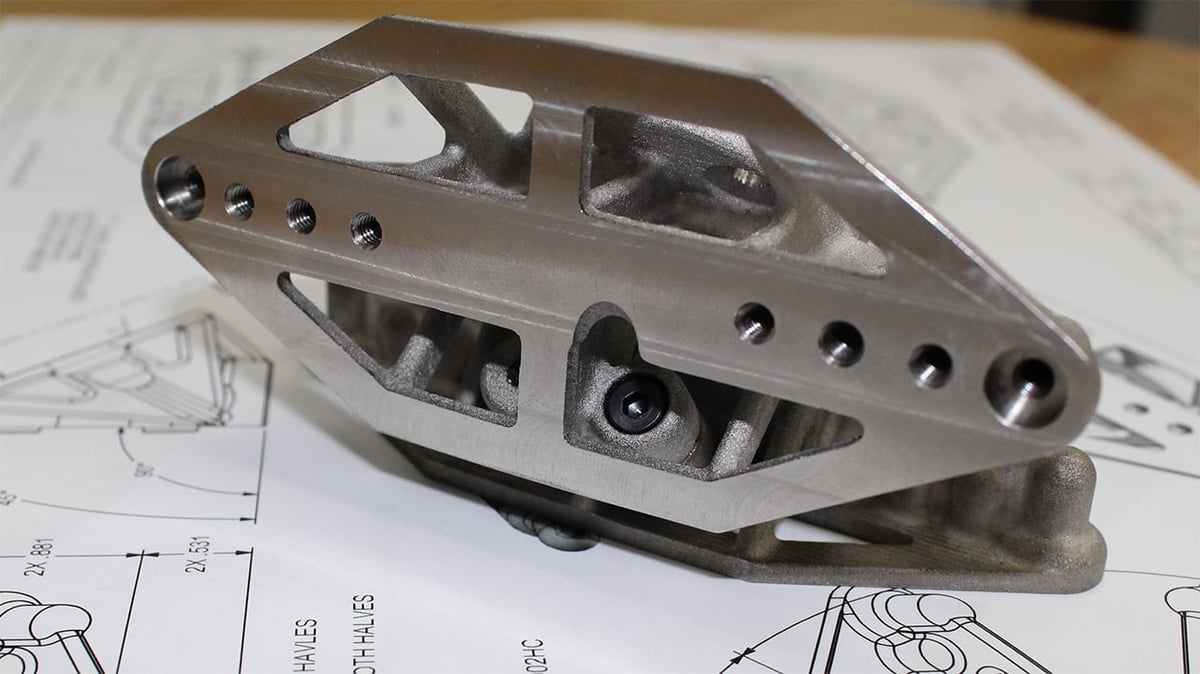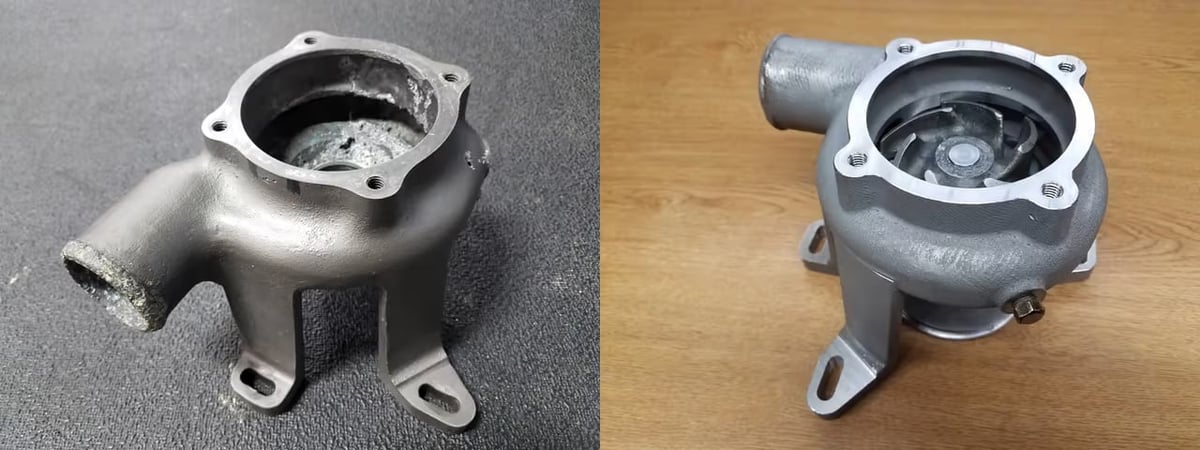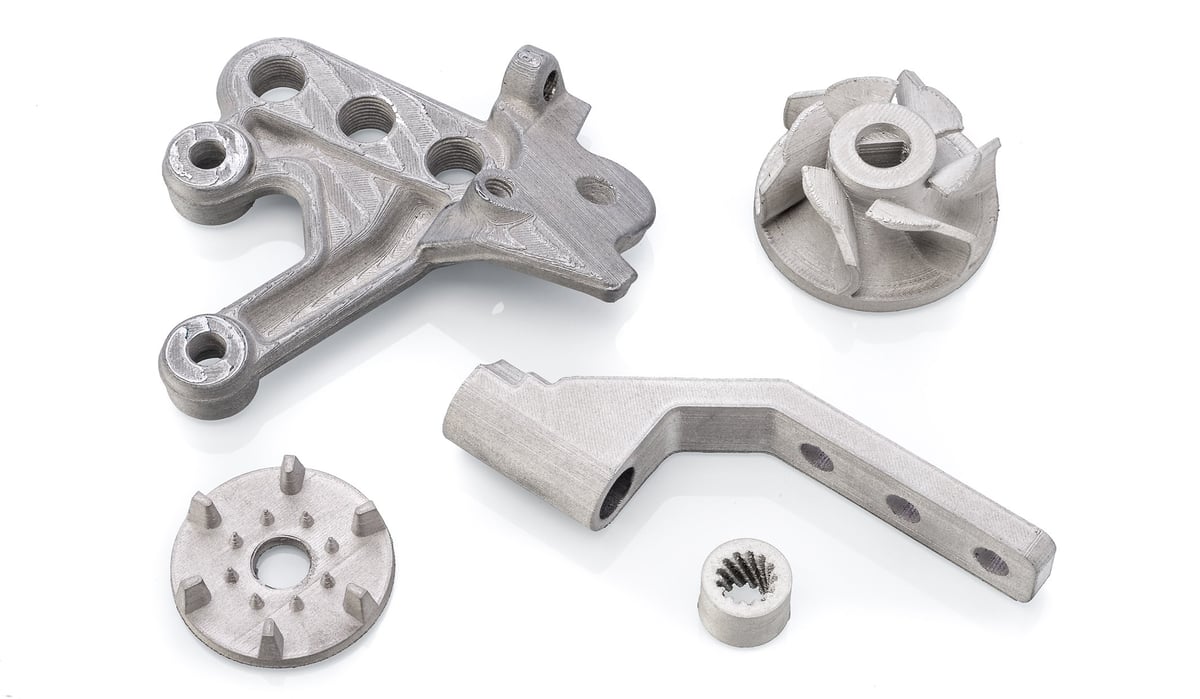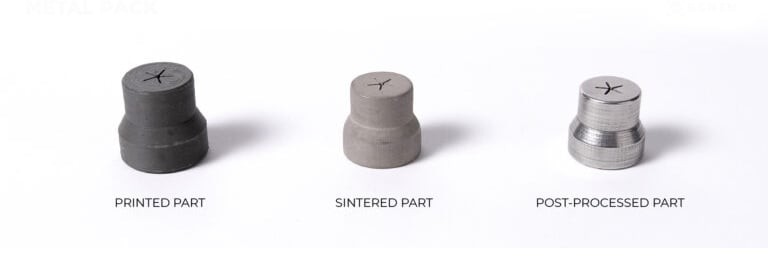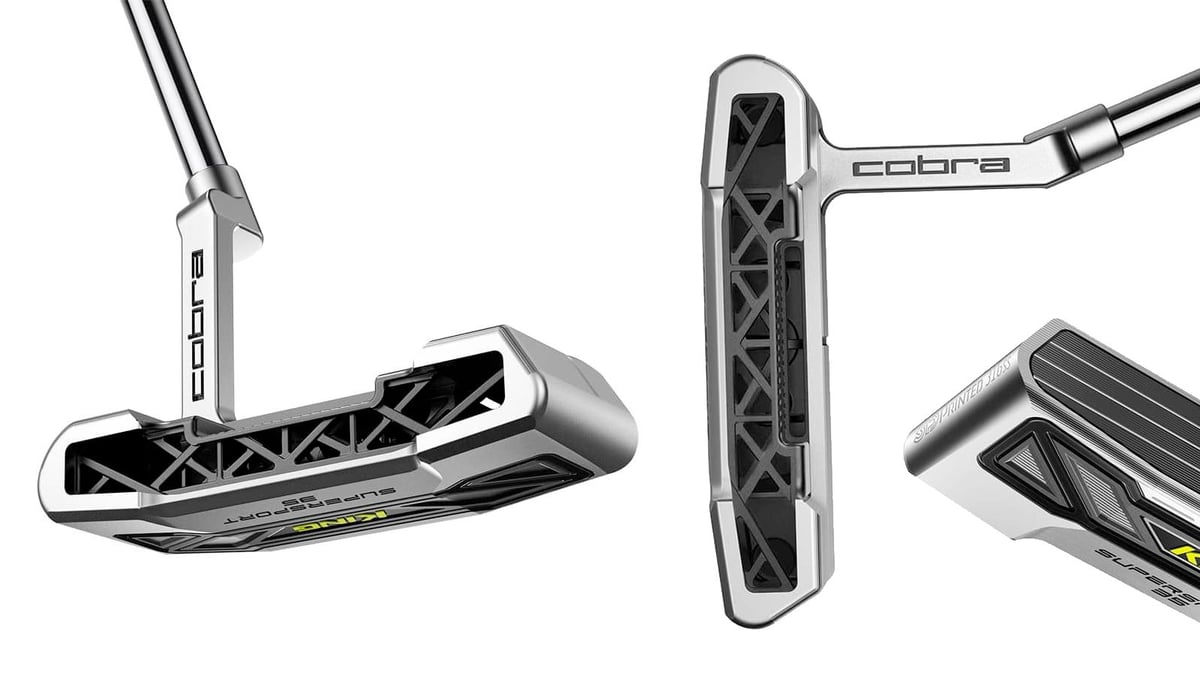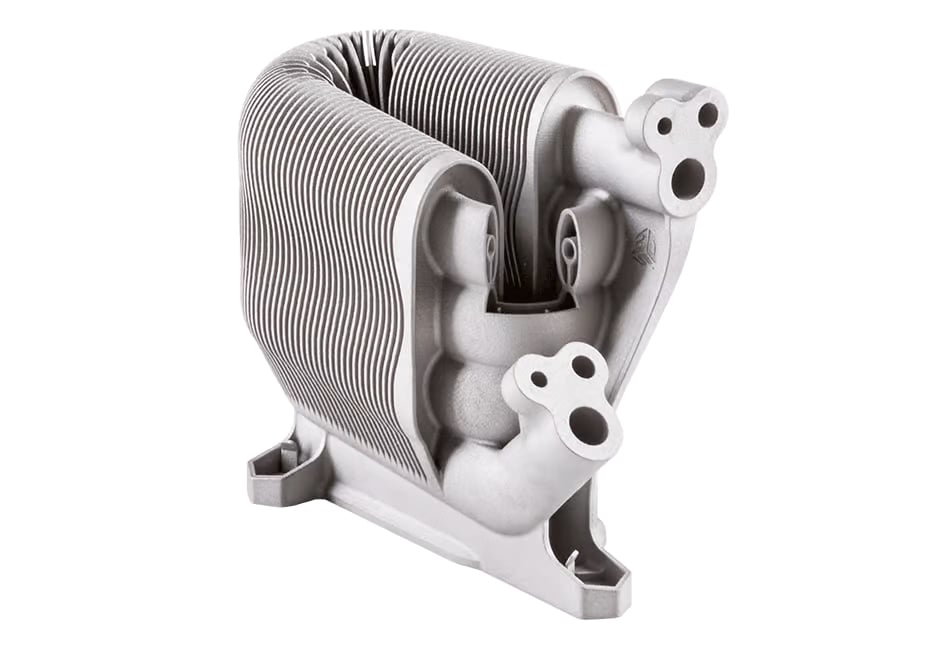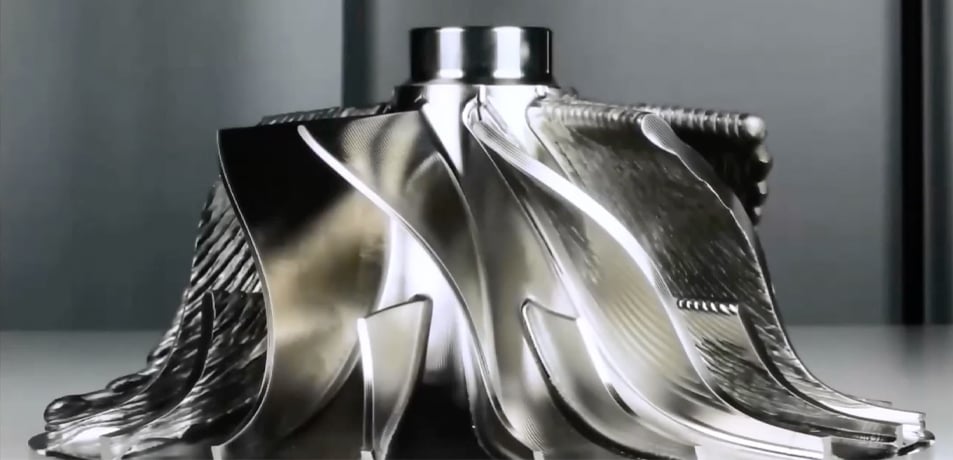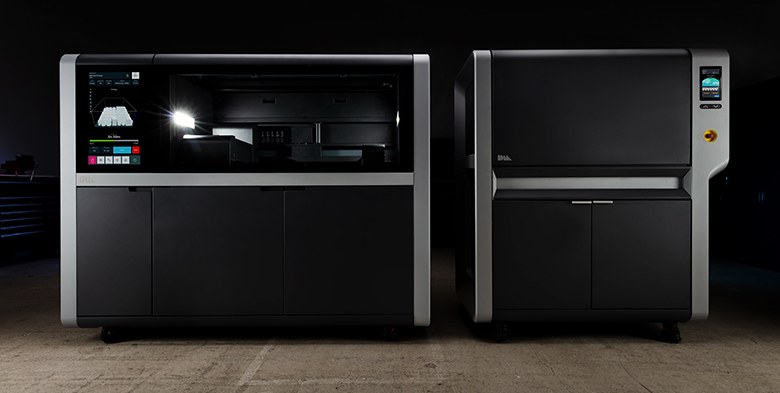The Power of Steel
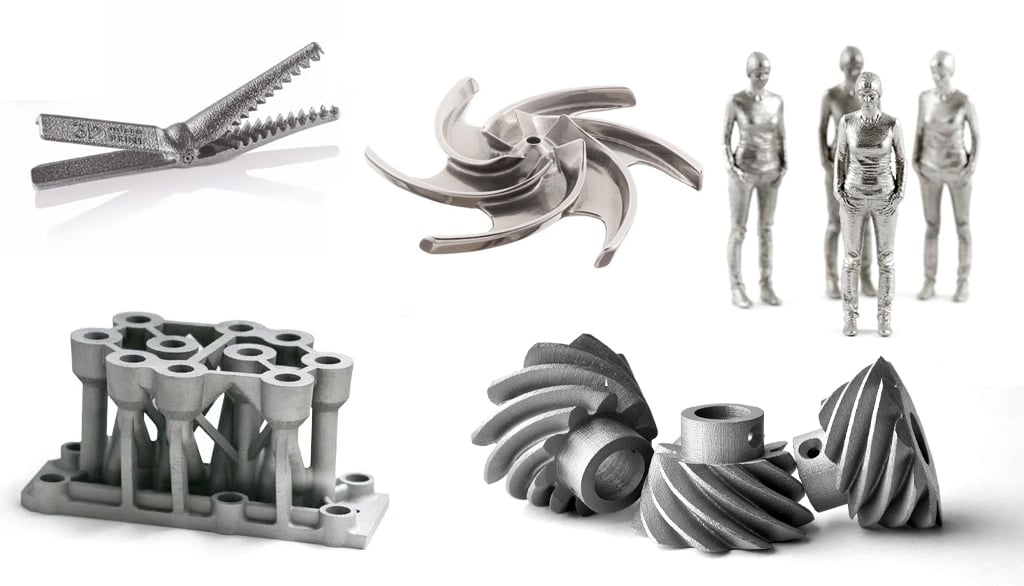
From cutlery and surgical tools to auto parts and turbine blades, stainless steel is all around us, and for a good reason. It’s highly resistant to corrosion and heat, and it’s a lightweight and affordable metal, making it ideal for 3D printing.
Today, 3D printed stainless steel is used for a multitude of industrial parts, as well as for design, architectural, and artistic applications. Why? Because it’s often faster, cheaper, and more efficient than traditional manufacturing methods.
If you’re looking for stainless steel spare parts, prototypes, or tools, there’s a wide range of printers, materials, and services that can deliver. Let’s take a look at all the options for 3D printing stainless steel.
Why 3D Print Stainless Steel?

Manufacturers have been stamping, cutting, molding, and welding stainless steel for well over 100 years. 3D printing the metal dates back only decades, but it already rivals traditional methods for speed and cost. Plus, 3D printing enables complex designs not possible with any other manufacturing method, which drives product innovation.
Before we look at how to 3D print with stainless steel, let’s look at the “why” through companies doing it today.
Unique Tooling
Allegheny Electric‘s high-volume factory couldn’t stop because its six-axis robot needed a new end-of-arm tool for serial inspection. But the tool was unique to the company’s needs and part of an assembly that had to attach to two other end-of-arm tooling pieces. An initial prototype was 3D printed in carbon-reinforced plastic, but that material didn’t have enough durability. Allegheny Electric then turned to stainless steel (17-4PH) using quick and affordable binder jetting 3D printing technology from printer maker ExOne, now a part of Desktop Metal. But instead of 3D printing the exact same part, the company took the opportunity to redesign it to take advantage of the shape freedom that 3D printing offers. Redesigning the part for 3D printing enabled the company to shave off about 40% of the weight by consolidating parts and reduced material waste to less than 5%. The final part (pictured below) took less than a day to print and cost roughly $150.
One-of-a-Kind Spare Parts
To get a famous 1952 race car, the #28 Cummins Diesel Special, running required a new water pump. The original was a unique design specific to the #28 car, which meant no spare production parts would fit the bill. To complicate matters further, the #28 had to race in a matter of weeks, which ruled out traditional sand-casting methods for a replacement part given an estimated lead time of 10 weeks.
Instead, Cummins engineers turned to reverse engineering and metal 3D printing using a laser powder bed fusion 3D printer by 3D Systems. The new water pump (pictured below) was 3D printed in 316-L stainless steel in only three days and the entire process took five weeks instead of 10. The housing matched perfectly with the other pump components and provided like-new performance for race car’s six races.
The US Navy recently turned to stainless steel 3D printing by installing a Meltio 3D printer in the toolroom aboard the USS Bataan. The Meltio uses a laser to melt metal wire and deposit it layer by layer, then the built-in CNC mill machines the part down to final tolerances. The system will run on 316L stainless, a common shipboard material with excellent corrosion resistance, and print repair parts for equipment, including components that are obsolete. This opens up the possibility of repairing systems without returning to the pier.
Articture & Construction
Dutch company MX3D 3D printed a fully functional stainless steel bridge to cross one of the oldest and most famous canals in the center of Amsterdam using wire arc additive manufacturing (WAAM) 3D printing technology. The novel approach allowed the company to 3D print strong, complex, and graceful stainless steel structures out of metal. Not only is the bridge uniquely beautiful, but channels within its structure house sensors that measure the traffic and load on the bridge in real time.
Complex Industrial Component Prototypes
An essential component of pumps, impellers control the pressures of the pump and must be designed for each specific application. Impellers require geometrically complex vanes that are designed specifically for the fluid being moved through the pump. These customized vanes are expensive and difficult to manufacture—requiring access to expensive capital equipment and skilled laborers.
With the ability to print 316L stainless steel parts in-house, design teams can now produce functional prototypes for testing quickly using the same metal material required for the final part. The cost of printing the stainless steel impeller pictured below, printed with the Desktop Metal Studio System, is about $70 per part. Far less than CNC machining prototypes and a major cost savings when multiple iterations of the prototype are required.
Medical Tool Functional Prototypes
Using 17-4 PH stainless steel from Markforged, Shukla Medical 3D prints prototypes in the same material as many of the final products, instead of using their CNC machine. They now use their Markforged carbon fiber 3D printer for initial prototypes, and then the Markforged Metal X system for the final prototype that goes into the hands of surgeons for evaluation. “The surgeon can envision using it in the actual incision and can tell us if it feels the right way in their hands,” says Zack Sweitzer, the company’s product development manager. “Being able to prototype more efficiently and get finished products to market more quickly will keep us at the forefront of the industry.”
How to 3D Print Stainless Steel

There is more than one way to 3D print stainless steel and each method has its pros and cons in terms of price, speed, quality, and volume.
Some 3D printers for stainless steel will fit on your desk, while others will fill an entire room. The resulting metal parts, likewise, come in a wide variety of mechanical properties, so you need to know a bit about the different methods to find the right fit for your project.
For example, if you need replacement nozzles for your factory production, a desktop FDM printer may be the quickest and cheapest option. However, if your stainless steel parts need to withstand certain amounts of pressure and force, you’ll want to go with laser powder bed fusion technology or metal binder jetting. If you need very large stainless steel parts, such as a ship propeller, you’ll want to take a look at wire arc additive manufacturing (WAAM).
When assessing your stainless steel 3D printing options, consider the final part density (90% – 99%), porosity (which could be a drawback or a benefit depending on your application), and the set of mechanical properties required, such as tensile strength.
For stainless steel 3D printing, you can choose from these 3D printing technologies:
- Fused Deposition Modeling (FDM)
- Binder Jetting
- Laser Powder Bed Fusion (LPBF), also known as Selective Laser Melting (SLM)
- Cold Spray
- Wire Arc Additive Manufacturing (WAAM)
- Micro 3D Printing
Metal Filament Desktop Printing
The most economical method involves a desktop 3D printer and stainless steel filament, which is a polymer material infused with a high percentage of stainless steel powder. Any of a wide range of affordable desktop FDM 3D printers can print with this type of filament available from companies, such as BASF Forward AM and others.
The parts, which are typically small replacement parts or prototypes, are 3D printed, then they need to have the polymer binder removed. Then there’s also a sintering step to produce more dense parts. The process, materials, and printers are detailed fully in the guide below.
Another type of metal extrusion 3D printing is called bound metal deposition (BMD). The 3D printers featuring BMD include the Metal X from Markforged and the Studio System from Desktop Metal. They call their material “bound metal rods” instead of filament. The exact composition of these rods is proprietary, but they contain metal powder in a wax or polymer binder, as the filament does.
Binder Jetting
The fastest method of 3D printing stainless steel parts involves binding the layers of stainless steel powder with a bonding agent in a technology know as binder jetting. Stainless steel powder is deposited at the bottom of a build box, where a print head moves across the box and selectively sprays a binder solution. The 3D model is built layer by layer until completion before it is dried in an oven to strengthen the binder. Overall, the material properties of metal binder jet parts are equivalent to metal parts produced with metal injection molding, which is one of the most widely used manufacturing methods for the mass production of metal parts. Plus, binder jet parts exhibit high surface smoothness, especially in internal channels.
Stainless steel metal binder jetting parts require secondary processes after printing to achieve their good mechanical properties. Because of its speed, binder jetting is most often selected for large-volume consumer products, such as the Cobra golf clubs pictured below.
Selective Laser Melting
The most widely used method for metal 3D printing is laser powder bed fusion (LPBF), also called selective laser melting (SLM) or simply metal sintering. LPBF 3D printers use high-powered lasers to selectively melt a metal powder. The melted parts fuse together layer-by-layer on a molecular basis until the homogenous model is complete. The packed powder on the printing bed provides support to the model during the printing process so supports are rarely required.
Depending on your application, when considering an LPBF 3D printer, you’ll look at the level of laser power, the laser beam diameter, the scan speed, the possible layer thickness (from 20 to 120 μm), the scan strategy, the part cooling strategy, and other features that set different brands, and different models within brands, apart. The surface finish of the final melted part is rough and, depending on your requirements, it may need post-processing to achieve a smooth and shiny result. Check out our guide to LPBF linked below.
Wire Arc Additive Manufacturing
The preferred method for large parts, such as architectural elements or parts for the marine or oil & gas industry, is WAAM. This method can produce large metal parts at a fraction of the time and cost of traditional forging, casting, or machining.
Wire arc additive manufacturing uses metal wire as the material and an electric arc as an energy source, very similar to welding. The arc melts the wire as it’s deposited layer on top of layer by a robotic arm onto a surface, such as a multi-axis turntable. As with welding, an inert gas is used to prevent oxidation and improve or control the metal’s properties.
The process gradually builds material into a complete 3D object or a repair of an existing object. There are no support structures to remove, and finished parts can be CNC machined to tight tolerances if necessary or surface polished. Typically, printed parts receive a heat treatment to relieve any residual stresses.
Stainless Steel 3D Printers
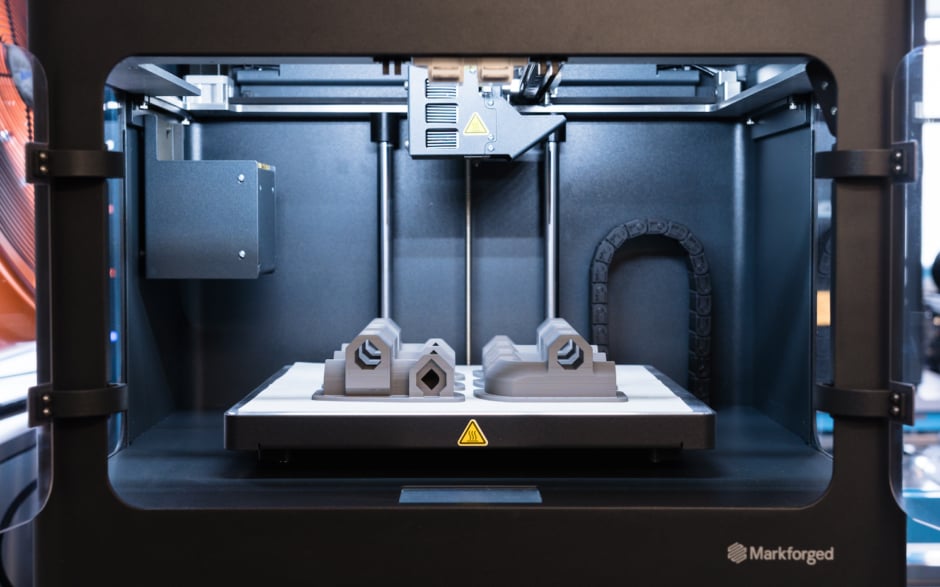
If you’re looking to purchase your own 3D printer for stainless steel parts, you have a wide range of options that you can narrow down by your price and application. In fact, almost all metal 3D printers can print in stainless steel since it’s a very popular material.
3D printer manufacturers will typically send you part samples for evaluation, and you can order 3D printed stainless steel parts from a wide variety of on-demand services to further evaluate if the technology will work for your application.
Desktop FDM Stainless Steel 3D Printers
As we touched on above, a growing number of desktop 3D printers have nozzles that can get hot enough to handle 3D printing stainless steel filament. But heat alone isn’t the only feature to consider. Printer makers UltiMaker and Markforged offer special break-away supports for metal 3D printing that significantly reduce post-processing time. Because the FDM method also requires a debinding step and a sintering step, you’ll need either more equipment or a service to debind and sinter your printed parts, which can add to the cost.
Shop Floor Stainless Steel 3D Printers
For functional prototypes and end-use industrial stainless steel parts, there is also a wide range of 3D printers to consider. Take a look at the All3DP guide to the top metal 3D printers on the market, which is updated regularly.
Among the top metal 3D printer makers, most print in stainless steels including:
- 316L stainless steel
- 17-4 PH stainless steel
- 420 stainless steel
- HH stainless steel
- custom stainless steel alloys
Stainless Steel 3D Printing Services
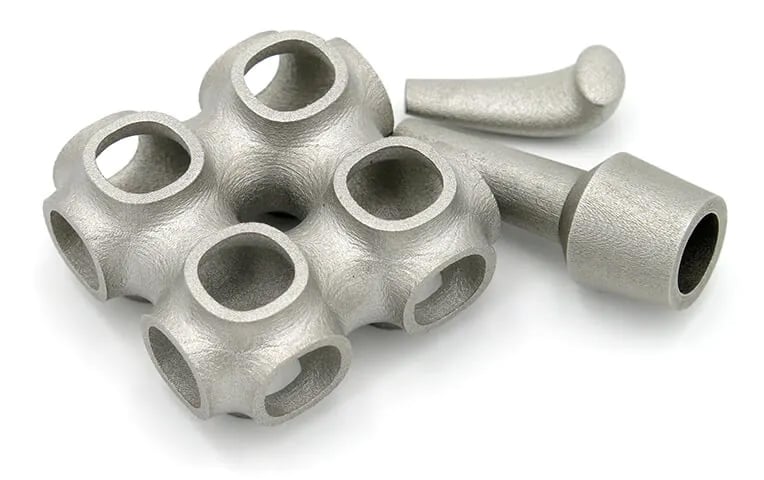
Demand for metal 3D printing has skyrocketed thanks to advancements in technology, new metal materials, and the lower price of metal 3D printers. But for many engineers and industrial designers, investing in their own metal 3D printers is still not in the cards. Fortunately, there’s a growing number of contract manufacturers with fleets of metal 3D printers ready to custom print your part, whether it’s a prototype, a final functional part, a unique spare part, or a work of art. But how do you pick the right one?
Craftcloud by All3DP isn’t just a metal 3D printing service; it’s a marketplace of 3D printing services that enables you to compare prices and services from different service providers and find the right custom manufacturer at the right price.
With partners around the world, Craftcloud presents you with the best services in terms of price and lead time, with no additional fees. Upload your part design file, select 316L, 420, or 17-4 PH stainless steel, then select your preferred technology: FDM, SLM, binder jetters. Lastly, select your finishing: polished, sandblasted matte, or other options.
Quotes are generated in real-time based on your uploaded models and location. Using the platform is as simple as any other 3D printing service, but with many more options available.
Other helpful features of Craftcloud are its professional network and support staff. If your part isn’t suitable for printing, or you simply don’t have a design, experts and professional partners will help you get your design off the ground. And if you’re having trouble with the order or delivery processes, the Craftcloud team is ready to assist.
Stainless Steel 3D Printing Service Providers
For more details on the top metal on-demand 3D printing services, most of which offer stainless steel, check out our updated guide below.
Which Types of Stainless Steel are 3D-Printable
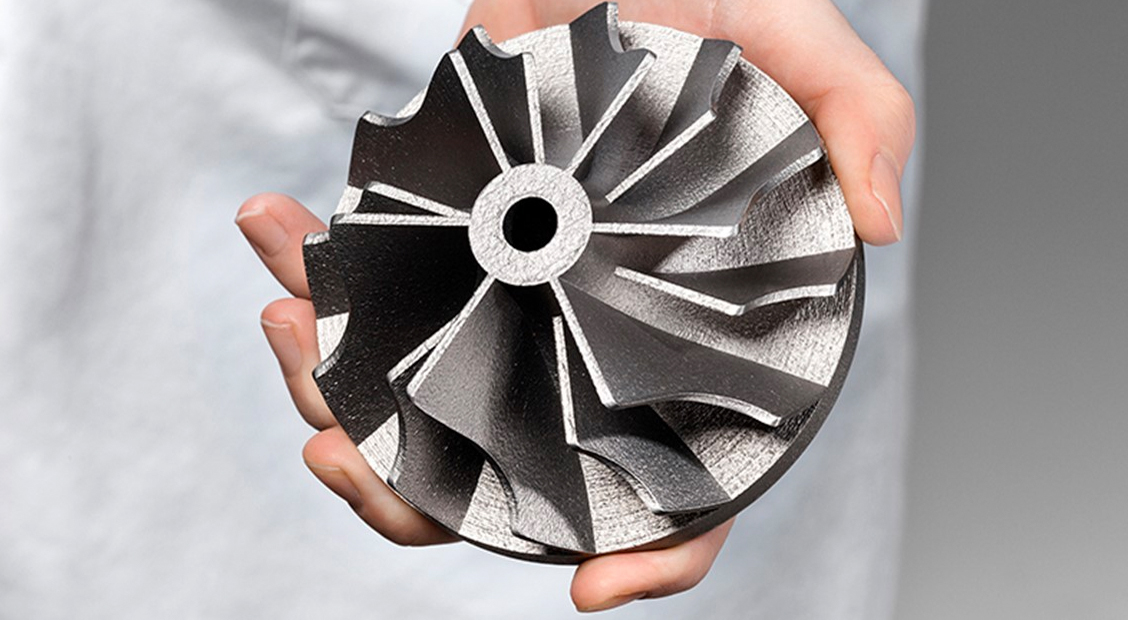
There are many kinds of stainless steel, and within each type, there are almost infinite variations. The most used types of stainless steel in 3D printing are:
- 316L Stainless Steel: The most popular choice for 3D printing for its corrosion resistance and mechanical properties. It is widely used in various industries, including aerospace, medical, and automotive.
- 17-4 PH Stainless Steel: This precipitation-hardening stainless steel offers excellent strength, hardness, and corrosion resistance, making it suitable for functional parts and industrial applications.
- 420 Stainless Steel: This stainless steel grade is often used for applications requiring high hardness and wear resistance, such as tooling and molds.
- 2205 Duplex Stainless Steel: Duplex stainless steels have a good combination of mechanical properties and corrosion resistance, making them suitable for certain challenging environments.
Not just any stainless steel is compatible with 3D printing, and most printer makers have qualified a specific metal material vendor for use in their machines. Recent research found that adjusting the formulation of 17-4 PH stainless steel enabled it to produce more consistent results when 3D printed. “Composition control is truly the key to 3D-printing alloys. By controlling the composition, we are able to control how it solidifies. We also showed that, over a wide range of cooling rates, say between 1000 and 10 million Celsius per second, our compositions consistently result in fully martensitic 17-4 PH steel,” said researcher Fan Zhang.
License: The text of "Stainless Steel 3D Printing – The Ultimate Guide" by All3DP Pro is licensed under a Creative Commons Attribution 4.0 International License.

